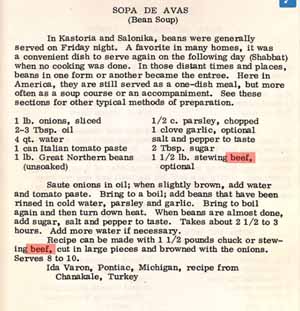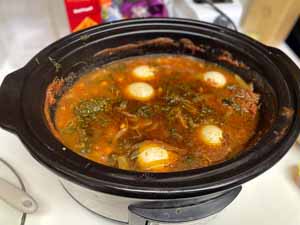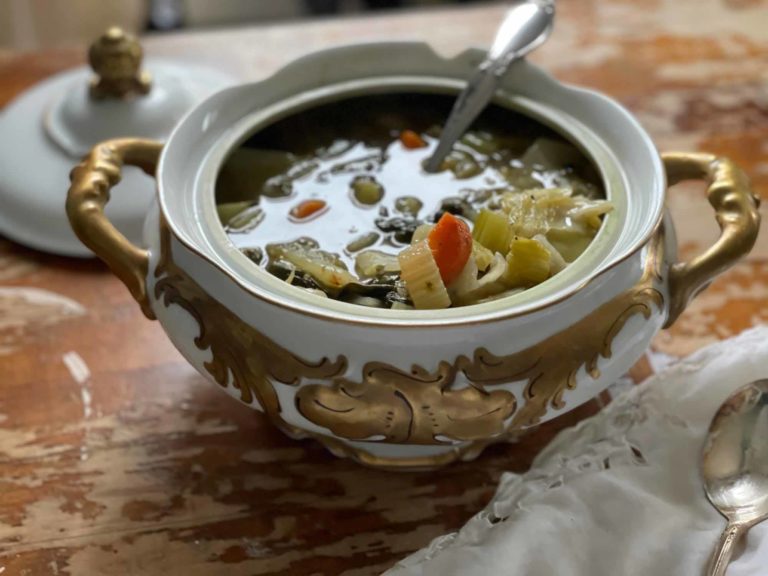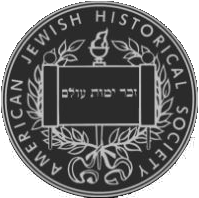I began my journey into the world of Jewish cuisine as an educator at the Tenement Museum in Manhattan. I loved talking about Sephardic foodways, especially Hamin, the Sephardic equivalent of Cholent (a slow-cooked stew prepared on Friday night to be eaten on Saturday after shul). I loved describing the spices that would go into the pot with the beans and meat, along with tomatoes and huevos haminados.
In the United States, Jewish food is often associated with Ashkenazic cuisine; I like to use food history to remind readers that Jewish cuisine (and history, and culture) exists far outside of the Ashkenazic frame of reference. So of course, I was excited to learn that AJHS had a substantial collection of Sephardic cookbooks in their historic cookbook collection, including one of my favorites: Cooking the Sephardic Way, a community cookbook published in 1971 by the Sephardic Sisterhood Temple Tifereth Israel in Los Angeles.
What I love most about Cooking the Sephardic Way is that it doesn’t just offer up traditional recipes, but it also teaches the reader about Sephardic life. Sephardic Cookery discusses Sephardic food and hospitality culture, explaining that “Sephardic hospitality has always been warm, gracious and very sweet.” It also emphasized the importance of the “three b’s” for breakfast: bourekas, boyos and bulemas. Ultimately, the book’s editors compiled it to preserve these recipes–typically only preserved orally and passed down through the generations–and keep them from getting lost.
I decided I wanted to make a Hamin from Sephardic Cookery, but oddly, when I read through the book, I couldn’t find any recipes called “Hamin.” I checked AJHS’ other Sephardic cookbooks, and still, no Hamin! I could only find the recipe in modern Jewish cookbooks. And then it occurred to me: there was no one recipe for Hamin. Each bowl of slow-cooked stew was unique, perhaps changing weekly based on a bevy of recipes inside the cook’s head, or the ingredients were available. Contemporary Sephardic cookbooks emphasize some of the differences; the recipe in Einat Admony’s cookbook Balaboosta uses chickpeas and pinto beans as well as barley, and sweetens the stew with prunes and dried apricots; The Sephardic Kitchen by Robert Sternberg offers a Salonika-style Hamin with marrow bones, rice, and lots of paprika, served with pickled vegetables. Meanwhile, The Book of Jewish Food by Claudia Roden offers an Italian version of the dish which uses nutmeg!

After reviewing these modern recipes, I returned to Sephardic Cookery, and a recipe I missed the first time suddenly jumped out at me: Sopa de Avas, bean soup. The cookbook’s editors even added: “In Kastoria and Salonika, beans were generally served on Friday night. A favorite in many homes, it was a convenient dish to serve again on the following day (Shabbat) when no cooking was done.” I’d found my Hamin!

This recipe is very simple and makes the perfect winter comfort stew. Although it doesn’t require much seasoning, this dish is rich, and balanced by the acid from the tomatoes. You can certainly make this dish your own, by adding the chickpeas, paprika, or nutmeg other cookbook authors suggest. I would definitely recommend adding eggs in their shell; the results will surprise you!
To make this recipe, I used a slow cooker – that’s what it’s for! The Crock Pot was invented in the 1930s by Irving Nachumsohn, the son of Russian Jewish immigrants, for the purpose of simply and safely cooking Shabbat stews. Just add all of the ingredients on Friday night, set it on low for 12 hours, and the next day you will have a beautiful stew!







